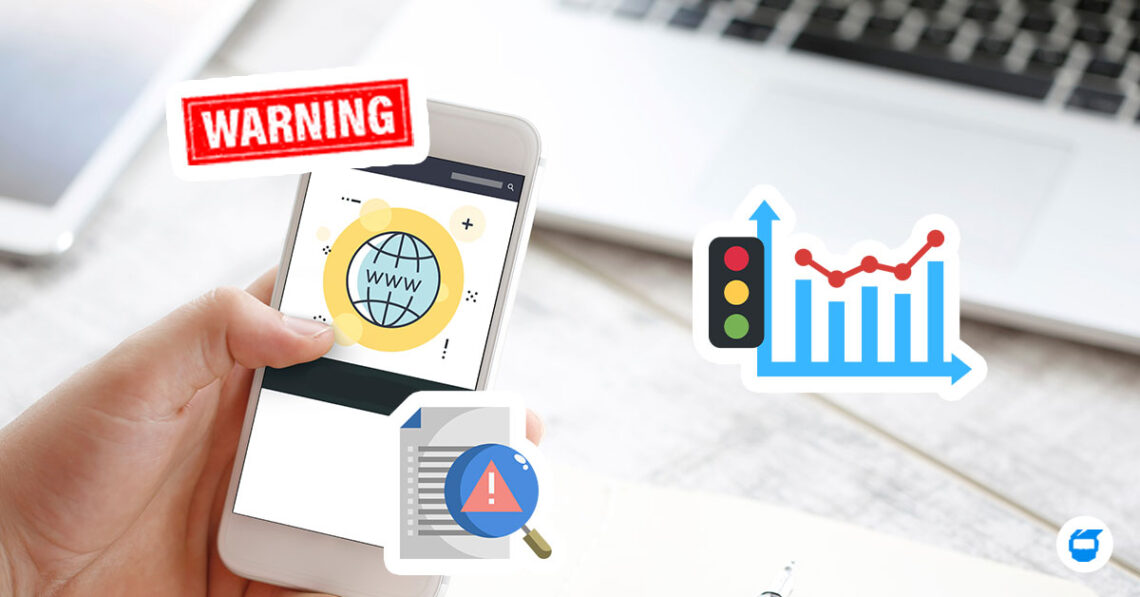Having a strong online presence in this digital age is essential for any business or individual. However, with the increasing popularity of the internet, comes the rising threat of cybersquatting.

To help you know more about this cybercrime, we will be discussing what cybersquatting is and how to protect your domain name from it.
Table of Contents
- What is Cybersquatting?
- What are the Types of Cybersquatting?
- How to Protect Your Domain Name From Cybersquatting
What is Cybersquatting?
Cybersquatting is the practice of registering, trafficking in, or using a domain name that is identical or confusingly similar to a trademark or brand name belonging to someone else. Typically, the goal of cybersquatting is to extort money from the rightful owner of the domain name or to divert traffic to their own website. It is also known as domain squatting, domain name hijacking, or cyber piracy.
Cybersquatters often choose domain names that are similar to well-known brands or trademarks, such as adding a hyphen, a different extension, or misspelling the name slightly. They then use these domain names to redirect users to their own website, which may contain advertisements, malware, or other fraudulent content.
What are the Types of Cybersquatting?
1. Reverse Cybersquatting
Reverse-cybersquatting is a term used to describe a situation where a trademark owner brings a claim against a domain name registrant, alleging that the domain name registrant has registered a domain name that is identical or similar to the trademark owner’s brand, but with the intention of using the domain name in a legitimate manner, such as to criticize or comment on the trademark owner’s products or services.
2. Typosquatting
Also known as URL hijacking, typosquatting is a type of cybersquatting that involves registering domain names that are similar to popular brands or trademarks, but with slight variations or misspellings. It tricks users who make typographical errors when entering a URL into their browser into visiting a website that they didn’t intend to visit.
For instance, a typosquatter might register a domain name like “gogle.com” instead of “google.com” in an attempt to capture traffic from users who accidentally type in the wrong URL. Once the user lands on the typosquatter’s website, they may be subjected to unwanted ads or scams, or their personal information may be compromised.
3. Name Jacking
Name jacking or domain jacking is another type of cybersquatting that entails transferring a domain name from one registrar to another without authorization. This can be accomplished in a number of ways, such as by making fraudulent transfer requests or by gaining unauthorized access to the domain owner’s registrar account.
4. Identity Theft
Identity theft may be a cybercrime that we’re all most likely familiar with. This type of cybersquatting commonly makes use of stolen personal information, such as names, social security numbers, and credit card details to impersonate an individual or gain access to their financial accounts or other sensitive information.
A cybercriminal who has obtained a victim’s login credentials for a domain name registrar could use those credentials to transfer the ownership of the victim’s domain name to themselves, effectively engaging in name jacking. The cybercriminal could then use the domain name to carry out further online fraud, such as phishing scams or selling counterfeit goods.
How to Protect Your Domain Name From Cybersquatting
Register Your Domain Name
One of the best ways to protect your domain name from cybersquatting is to register it yourself. By registering your domain name, you will have legal ownership of the name and no one else can use it without your permission. You can register your domain name through a domain registrar or a web hosting company.
Related: What is a Web Domain? Key Things You Should Know
Register Your Trademark
Registering your trademark can also help protect your domain name from cybersquatting. Doing so will help you have legal protection for your brand or product name, making it easier for you to take legal action against cybersquatters who try to use your trademark or brand name for their own purposes.
Monitor Your Domain Name
Regularly monitoring your domain name can help you detect cybersquatting early on. You can use tools such as Google Alerts or Domain Name Monitoring Services to keep an eye on your domain name and be notified of any suspicious activity.
Take Legal Action
Lastly, take legal action. The Anticybersquatting Consumer Protection Act (ACPA) is a US law that provides legal protection against cybersquatting. You can file a complaint under the ACPA with the World Intellectual Property Organization (WIPO) or the National Arbitration Forum (NAF).
Cybersquatting is a serious threat that can cause significant harm to your online presence and reputation. So If you believe that someone is cybersquatting on your domain name, don’t simply let it slide and take protective measures as soon as possible to ensure the safety of your brand and reputation. Remember, prevention is always better than cure!
Do you need help with web and email hosting? Contact us today so we can help you!

